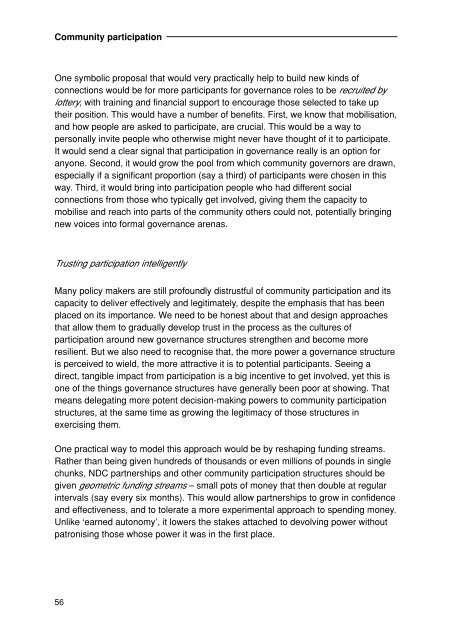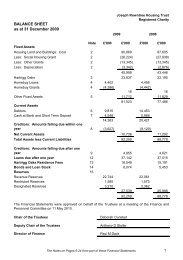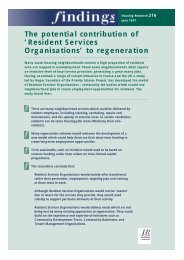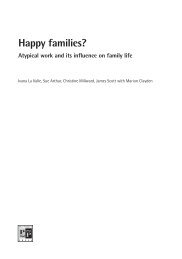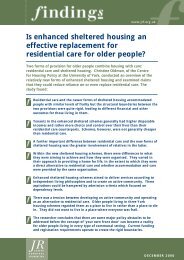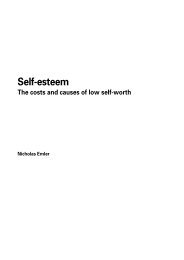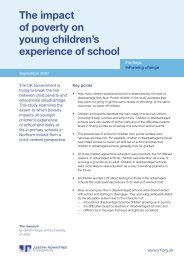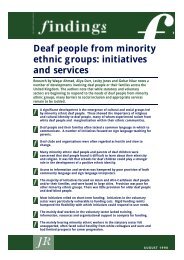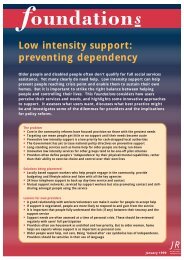Community participation - Joseph Rowntree Foundation
Community participation - Joseph Rowntree Foundation
Community participation - Joseph Rowntree Foundation
Create successful ePaper yourself
Turn your PDF publications into a flip-book with our unique Google optimized e-Paper software.
<strong>Community</strong> <strong>participation</strong><br />
One symbolic proposal that would very practically help to build new kinds of<br />
connections would be for more participants for governance roles to be recruited by<br />
lottery, with training and financial support to encourage those selected to take up<br />
their position. This would have a number of benefits. First, we know that mobilisation,<br />
and how people are asked to participate, are crucial. This would be a way to<br />
personally invite people who otherwise might never have thought of it to participate.<br />
It would send a clear signal that <strong>participation</strong> in governance really is an option for<br />
anyone. Second, it would grow the pool from which community governors are drawn,<br />
especially if a significant proportion (say a third) of participants were chosen in this<br />
way. Third, it would bring into <strong>participation</strong> people who had different social<br />
connections from those who typically get involved, giving them the capacity to<br />
mobilise and reach into parts of the community others could not, potentially bringing<br />
new voices into formal governance arenas.<br />
Trusting <strong>participation</strong> intelligently<br />
Many policy makers are still profoundly distrustful of community <strong>participation</strong> and its<br />
capacity to deliver effectively and legitimately, despite the emphasis that has been<br />
placed on its importance. We need to be honest about that and design approaches<br />
that allow them to gradually develop trust in the process as the cultures of<br />
<strong>participation</strong> around new governance structures strengthen and become more<br />
resilient. But we also need to recognise that, the more power a governance structure<br />
is perceived to wield, the more attractive it is to potential participants. Seeing a<br />
direct, tangible impact from <strong>participation</strong> is a big incentive to get involved, yet this is<br />
one of the things governance structures have generally been poor at showing. That<br />
means delegating more potent decision-making powers to community <strong>participation</strong><br />
structures, at the same time as growing the legitimacy of those structures in<br />
exercising them.<br />
One practical way to model this approach would be by reshaping funding streams.<br />
Rather than being given hundreds of thousands or even millions of pounds in single<br />
chunks, NDC partnerships and other community <strong>participation</strong> structures should be<br />
given geometric funding streams – small pots of money that then double at regular<br />
intervals (say every six months). This would allow partnerships to grow in confidence<br />
and effectiveness, and to tolerate a more experimental approach to spending money.<br />
Unlike ‘earned autonomy’, it lowers the stakes attached to devolving power without<br />
patronising those whose power it was in the first place.<br />
56


